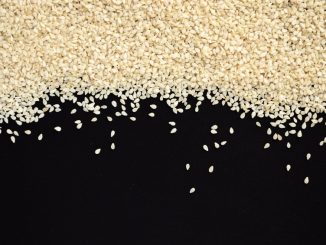
Ethylene Oxide Keeps Raising It’s Head
Ethylene oxide (EtO) is one of the most potent pesticides and antibacterial agents available for treating food and textile produce. There are however serious health […]

Ethylene oxide (EtO) is one of the most potent pesticides and antibacterial agents available for treating food and textile produce. There are however serious health […]

In the intricate ecosystem of the oral microbiome, Streptococcus mutans emerges as a central character, wielding both its microbial prowess and, unfortunately, its destructive potential. […]

The Streptococcus genus stands as a testament to the remarkable diversity and complexity within the microbial world. Comprising a wide array of species, both commensal […]

Pseudomonas aeruginosa is commonly associated with food contamination and causes infection in immunocompromised people. It is the agent responsible for ventilator induced pneumonia. The bacteria, […]

Lactic acid bacteria (LAB) constitute part of the autochthonous microbiota of many types of foods. They are especially prevalent in fermented foods. Members of the […]

The bacteriocins are peptides proteins that are toxic to microorganisms. They are produced by other bacteria and yeasts which are not lethal to themselves. They […]

Penicillium molds are a diverse group of filamentous fungi belonging to the genus Penicillium. They are widely distributed in various environments, including soil, decaying matter, […]

Trichoderma atroviride is a species of fungus that belongs to the genus Trichoderma, which is known for its role as a biocontrol agent in agriculture. […]

Corynebacterium glutamicum is a Gram-positive, non-pathogenic bacterium that belongs to the genus Corynebacterium. It is widely used in industrial biotechnology for the production of various […]

Aspergillus oryzae, also known as Koji mold, is a filamentous fungus belonging to the genus Aspergillus. It is widely used in various traditional and industrial […]

Lactobacillus plantarum is a prominent species within the genus Lactobacillus, a group of bacteria known for their lactic acid production and their beneficial roles in […]

Plant-based fermented beverages are seen as heralding a new dawn in healthy eating. They are very much linked to helping us develop and sustain a […]

Aspergillus awamori is a filamentous fungus belonging to the genus Aspergillus. It is commonly used in various biotechnological applications, particularly in the fermentation industry for […]

The Rop (Repressor of Primer) protein is a small, homodimeric protein found in bacteria, particularly in Escherichia coli. It plays a crucial role in the […]

A virus is a non-cellular particle which consists of genetic material and protein that enables it to invade living cells. Some do contain lipid as […]

Listeria monocytogenes (Listeria) continues to represent one of the most significant foodborne pathogens. It is a bacterium, a microbe with devastating impact in susceptible people. […]

Extracellular polysaccharides (EPS) or exopolysaccharides as they are also often called are produced by both prokaryotes (eubacteria and archaebacteria) and eukaryotes (phytoplankton, fungi, and algae). […]

Fusarium is a genus of filamentous fungi commonly found in soil and plant material. It comprises a large and diverse group of molds that can […]

Achieving genetic stability in microbial strains for industrial purposes is crucial to ensure consistent and reliable production of desired products. Here are some strategies employed […]

Bacillus licheniformis is a Gram-positive, rod-shaped bacterium that belongs to the genus Bacillus. It is commonly found in soil, dust, and various natural environments worldwide. […]
Copyright © 2025 | WordPress Theme by MH Themes